Japanese Barberry Berberis thunbergii 'Fireball' (PBR)

ABOUT
The Japanese barberry 'Fireball' is a striking deciduous shrub known for its radiant foliage that provides a burst of vibrant color in the landscape. The leaves are small and spatula-shaped with a texture that feels somewhat leathery. In spring, the new growth appears in shades of brilliant red to purple, bringing a fiery intensity that stands out against the greens commonly found in gardens. As the seasons change from spring to summer, the leaves may transition to a deeper reddish-purple, maintaining the plant's colorful character. In fall, the foliage often turns into combinations of bright red or orange, lighting up the garden with warm autumnal hues before the leaves drop. Adding to its ornamental appeal, the Japanese barberry 'Fireball' may produce small, yellow flowers in late spring, though they are often inconspicuous when compared to the showy leaves. Following the flowers, tiny, bright red berries can develop, which provide a sharp contrast to the foliage and can attract birds and other wildlife. The shrub possesses thorny stems, which can create a dense, spiky barrier, and it has a compact, rounded habit, making it a suitable choice for borders or foundation plantings without needing to mention its dimensions.
About this plant
 Names
NamesFamily
Berberidaceae
Synonyms
Red Barberry, Japanese Barberry Fireball, Fireball Barberry, Thunberg's Barberry Fireball
Common names
Berberis thunbergii 'Fireball' (PBR).
 Toxicity
ToxicityTo humans
The Japanese barberry is considered to have parts that are toxic if ingested. Eating berries or other parts of the plant may lead to symptoms such as nausea, vomiting, diarrhea, and lethargy. It's important that humans avoid consuming this plant to prevent the occurrence of these adverse health effects.
To pets
The Japanese barberry is also toxic to pets. If a pet ingests parts of this plant, they may exhibit symptoms including vomiting, diarrhea, and potentially more serious gastrointestinal issues. It's crucial to keep pets away from this plant and to seek veterinary care if you suspect your pet has consumed any part of it.
 Characteristics
CharacteristicsLife cycle
Perennials
Foliage type
Deciduous
Color of leaves
Red
Flower color
Yellow
Height
2 feet (0.61 meters)
Spread
2 feet (0.61 meters)
Plant type
Shrub
Hardiness zones
4
Native area
Japan
Benefits
 General Benefits
General Benefits- Compact size: Berberis 'Fireball' is a small shrub, making it an ideal choice for smaller gardens or tight spaces.
- Seasonal interest: It offers vivid red foliage in the spring which then deepens to a rich purple in the summer and brightens to a fiery red in autumn.
- Low maintenance: This deciduous shrub requires minimal care once established, making it suitable for gardeners of all skill levels.
- Drought tolerance: Berberis 'Fireball' is drought-resistant once established, which is beneficial in regions with water restrictions or for gardeners seeking low-water plants.
- Pest resistance: The plant is generally resistant to pests, reducing the need for chemical interventions.
- Attracts wildlife: Its berries can attract birds, providing an ecological benefit and aiding in backyard biodiversity.
- Hardiness: It is tolerant of a wide range of soil types and environmental conditions, making it a resilient addition to the landscape.
 Medical Properties
Medical PropertiesThis plant is not used for medical purposes.
 Air-purifying Qualities
Air-purifying QualitiesThis plant is not specifically known for air purifying qualities.
 Other Uses
Other Uses- Photography Prop: The bright red foliage of the Japanese barberry 'Fireball' can be used as a stunning backdrop or feature in garden photography, creating striking images with its vibrant colors.
- Natural Dye: The bark and roots can yield a yellow dye, which may be used in textile coloring or for craft purposes to create natural hues on fabrics.
- Garden Art: The shrub can be pruned and shaped into various forms, serving as living sculptures or topiaries that provide year-round artistic interest in a garden.
- Sound Barrier: Planting a thick hedge of Japanese barberry 'Fireball' can help to reduce noise pollution by absorbing and deflecting sound waves, making it a functional addition to urban gardens.
- Erosion Control: The dense root system can help to stabilize slopes and banks, therefore preventing soil erosion and helping to protect landscapes, especially in areas prone to heavy rains.
- Garden Thematic Elements: Japanese barberry 'Fireball' can be used to establish 'fire' themed areas within a garden, complementing other plants with red, orange, and yellow tones.
- Privacy Screen: When planted in rows, the thick foliage can provide a privacy screen, blocking the view from neighbors or passersby effectively throughout the growing season.
- Winter Garden Interest: Even after the leaves drop, the thorny branches can add textural interest to a winter garden, especially when frosted or dusted with snow.
- Educational Tool: This plant can be used in teaching environments to discuss plant adaptability, invasive species management, or deciduous plant lifecycles within a horticultural context.
- Wildlife Shelter: Although it's often noted for not being native, it can still provide shelter for small creatures like birds during the colder months, especially in urban settings where natural habitats might be limited.
Interesting Facts
 Feng Shui
Feng ShuiThe Japanese Barberry is not used in Feng Shui practice.
 Zodiac Sign Compitability
Zodiac Sign CompitabilityThe Japanese Barberry is not used in astrology practice.
 Plant Symbolism
Plant Symbolism- Protection: The Berberis thunbergii, commonly known as Japanese barberry, is often associated with protection due to its thorny branches, which can act as a natural barrier against intruders or negative forces.
- Adaptability: Japanese barberry is known for its hardiness and ability to adapt to different soil types and environmental conditions, symbolizing flexibility and resilience in various circumstances.
- Inner Fire: The 'Fireball' cultivar, with its striking red foliage, represents inner strength, passion, and vibrancy, symbolizing an energetic spirit and the fire within.
- Purification: Some cultures believe that barberry has purifying qualities, both medicinally and spiritually, symbolizing cleansing and the removal of negativity.
 Water
WaterThe Japanese Barberry 'Fireball' requires consistent moisture, but it is important to avoid waterlogging. Water the plant deeply once a week, making sure the soil is moist but not saturated. During hotter, drier periods, increase watering frequency to twice a week, providing about 1-2 gallons per watering session depending on soil type and weather conditions. Reduce watering in the fall and winter when the plant's growth slows down. Always check the top inch of the soil before watering; if it's dry, it's time to water.
 Light
LightJapanese Barberry 'Fireball' thrives in full sun to partial shade. The ideal location offers at least 4-6 hours of direct sunlight per day to encourage the most vibrant foliage color. It can tolerate some light shade but its color may not be as intense, and too much shade may lead to a less compact growth habit.
 Temperature
TemperatureThe Japanese Barberry 'Fireball' can tolerate a wide range of temperatures, making it a hardy choice for many gardens. It can survive in temperatures as low as -30°F and as high as 90°F. However, the ideal temperature range for optimal growth is between 60°F and 70°F. Ensure that it's not subjected to prolonged periods of extreme heat without adequate watering.
 Pruning
PruningPrune Japanese Barberry 'Fireball' to maintain its shape and size, improve air circulation, and remove any dead or diseased branches. The best time for pruning is late winter or early spring before new growth begins. Annual pruning is sufficient for this plant to keep it looking tidy and encourage the growth of brightly colored new foliage.
 Cleaning
CleaningAs needed
 Soil
SoilJapanese Barberry 'Fireball' thrives in well-drained soil with a pH range of 5.5 to 7.5. A mix of garden soil, compost, and a small amount of peat moss to improve acidity is ideal. This composition ensures the plant receives adequate nutrients while maintaining proper drainage.
 Repotting
RepottingJapanese Barberry 'Fireball' does not require frequent repotting. Repot the plant every 2-3 years to refresh the soil or when it has outgrown its current container, ensuring to prune the roots lightly if they are overgrown.
 Humidity & Misting
Humidity & MistingJapanese Barberry 'Fireball' is tolerant of a range of humidity levels; however, it prefers moderate ambient humidity. There is no need for specific humidity control unless the air is extremely dry.
 Suitable locations
Suitable locationsIndoor
Plant in well-drained soil, place in bright light, and water moderately.
Outdoor
Plant in full sun to partial shade in well-drained soil; water regularly.
Hardiness zone
4-8 USDA
 Life cycle
Life cycleBerberis thunbergii 'Fireball', commonly known as the Red Japanese Barberry, starts as a seed, which germinates in spring to early summer under suitable conditions of warmth and moisture. The seedling stage follows, characterized by initial root development and the emergence of the first leaves, adapting to its environment. As the sapling matures, it undergoes vegetative growth, developing a robust root system, sturdy stems, and a proliferation of the distinctive red foliage. The plant reaches maturity in a few years, where it then flowers in spring, with small yellow flowers that are often inconspicuous, succeeded by bright red berries that persist into winter. The mature barberry plant enters a period of maintenance, where it continues to grow and thicken, producing flowers and seeds annually, ensuring propagation. Lastly, after several years to decades, depending on conditions and care, the plant ultimately ages and experiences senescence, leading to reduced vigor and eventual death.
 Propogation
PropogationPropogation time
Spring-Early Summer
Berberis thunbergii 'Fireball', commonly known as Japanese Barberry 'Fireball', is typically propagated through stem cuttings. This is the most popular method due to its simplicity and efficiency. The best time to take stem cuttings is in the late summer when the plant is semi-hardwood, which means the stems are not too soft or too hard. Cuttings should be about 4 to 6 inches (10 to 15 centimeters) in length, taken from healthy, disease-free plants. Remove the lower leaves, dip the cut end in rooting hormone, and insert the stem cutting into a pot filled with a light, well-draining potting mix. The pot should then be covered with a clear plastic bag to maintain humidity and placed in indirect light. The cuttings typically root in 6 to 8 weeks, after which they can be transplanted.
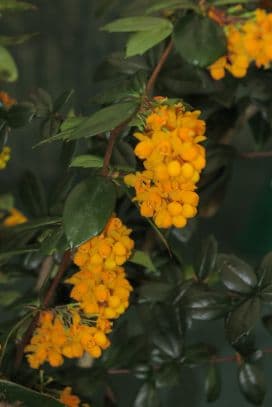
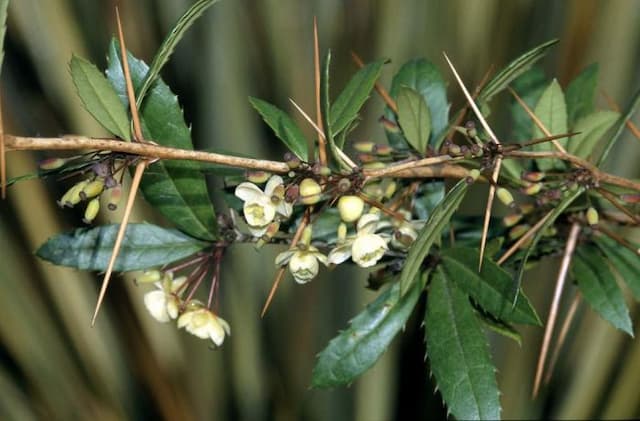
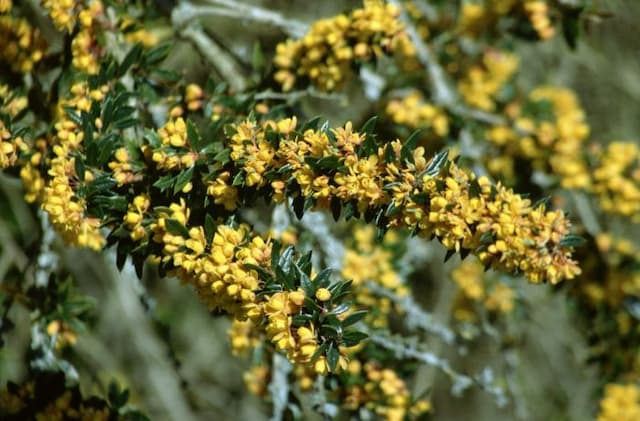
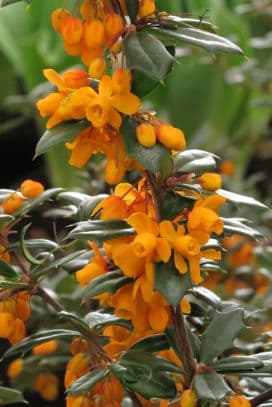
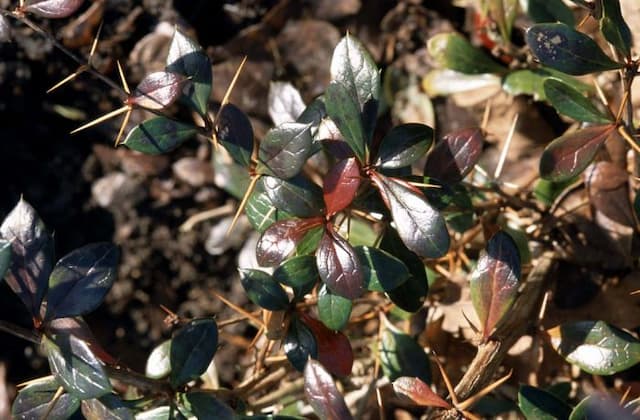


![Japanese barberry [Bonanza Gold]](/_next/image?url=https%3A%2F%2Fplants-admin.emdemapps.com%2Fimages%2Fplants%2F%2Fimages%2F604b5385e413f.png&w=640&q=75)

